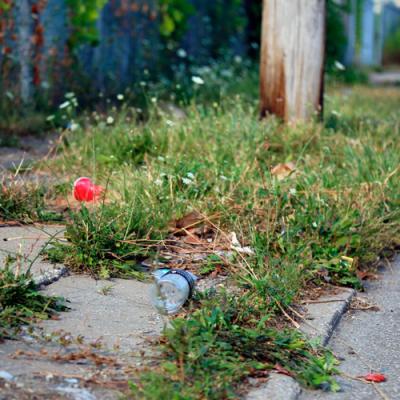Erie At Large: Housing Crisis
Show Me A Hero and Erie's housing crisis: What we can learn from Yonkers, N.Y.
August 30 marked the broadcast of the final installments of the six-episode HBO mini-series Show Me a Hero. It's a tale of a housing crisis and the politics of race and class in late 1980s Yonkers, N.Y., based on the book of the same name by Lisa Belkin and brought to the small screen by David Simon, creator of the The Wire and one of the finest city journalists of the late 20th Century.
In the mid-1980s, a federal judge mandated that Yonkers create scattered subsidized public housing as part of a desegregation order that would move black families into neighborhoods previously kept white by design. The judge's ruling challenged the leadership of the Yonkers City Council and the Mayor's office to act on behalf of public housing tenants, causing a series of contentious elections and turnovers on both sides of the political aisle.
At the apex of the conflict, local pols used and manipulated each other and their constituents, allies, and opponents by positioning themselves for or against city plans and regional planners, contracted pawns to be played upon changes in the political tide.
Show Me a Hero comes at a unique moment at which the City of Erie contemplates its own housing crisis. It's not a public housing crisis, but it is one rooted in race and class.
The city's housing stock is excessive and decrepit. That's the finding, in part, of the City of Erie's first-ever comprehensive plan, which inventoried Erie's residential properties based on structural and aesthetic quality of the homes, value of the land, zoning violations levied against landowners, tax delinquencies, and neighborhood poverty rates. It's going to take hundreds of millions of dollars to fix the problem. The worst of the city's housing stock is located on Erie's East Side, where land values are lowest, the population is most heavily concentrated, and poverty looms most large.
The city is now at a precipice. Crime is on the rise, family-sustaining jobs are stagnant, and the population is on the decline. We hear much from our elected officials about so-called root causes, and we often hear that root causes begin "in the home." It's fair to say that root causes are more directly of the home.
Nearly 40 percent of the city lives in single family or duplex-style multi-unit housing. These are the dominant housing structures on the East side and they comprise the majority of blighted structures within the city limits.
A few weeks ago, the Mayor and Erie City Chief of Police, Randy Bowers, announced their plan to address citywide violence and the incipient threat that seems to loom from neighborhood to neighborhood with a strong correlation between socioeconomics and crime. Chief Bowers outlined a strategy for combating violence that included shifting of internal resources and partnerships with county, state, and federal agencies. We have yet to hear from City Hall about its pursuit of "root causes," although I suspect in the coming months we'll hear more about the great work being done by organizations such as the Neighborhood Resource Organization, the Sisters of St. Joseph Neighborhood Network, and the Bayfront East Side Taskforce, than we will be given a plan of action from our elected officials.
One thing is clear: The city must address its housing crisis. All of the money spent on downtown development, widening and narrowing roadways, and renovating city parks means nothing if its residents live in overpriced squalor.
Blight is an outward manifestation of lost hope. So is crime, violence, and drug problems that will soon outpace the gun problem at the forefront of public discussion.
Public housing in Yonkers was designed by Oscar Newman, an architect who argued for "defensible spaces" in urban planning as a means to prevent crime. The basic tenet of Newman's theory was that if you gave people spaces that they believed were their own – in this case low-rise public housing with personal yards rather than high-rise towers with nebulous public spaces – then people would defend their personal spaces to protect themselves and their property.
The blight-filled East side has few defensible spaces. It's populated with homes owned by absentee landlords who replace windows with plywood, leave green spaces unattended, and treat many of the properties as storage bins rather than housing units. It's no surprise that zoning violations are highest in this part of the city as well.
Let's not stand in judgment when the renters there take little pride in their temporary spaces or when property owners have grown too scared to address their neighbors in an environment that is now indefensible.
When you couple the physical problems of the neighborhood, with the comparatively expensive cost of living, and the fact that these neighborhoods are primarily populated by people of color, it's a miracle that the city has not had to face the kind of legal interventions brought to bear in Yonkers more than two decades ago.
"Show me a hero and I'll write you a tragedy," wrote F. Scott Fitzgerald. Each of Erie's leaders and mayoral hopefuls all will position themselves as the hero, proffering remedy upon remedy. But if the comprehensive plan we have, and the findings it holds, is shelved for lack of interest or unwillingness to cull resources, there is but one ending. That would be a tragedy.
Jim Wertz can be reached at jWertz@ErieReader.com, and you can follow him on Twitter @jim_wertz.


.png)
